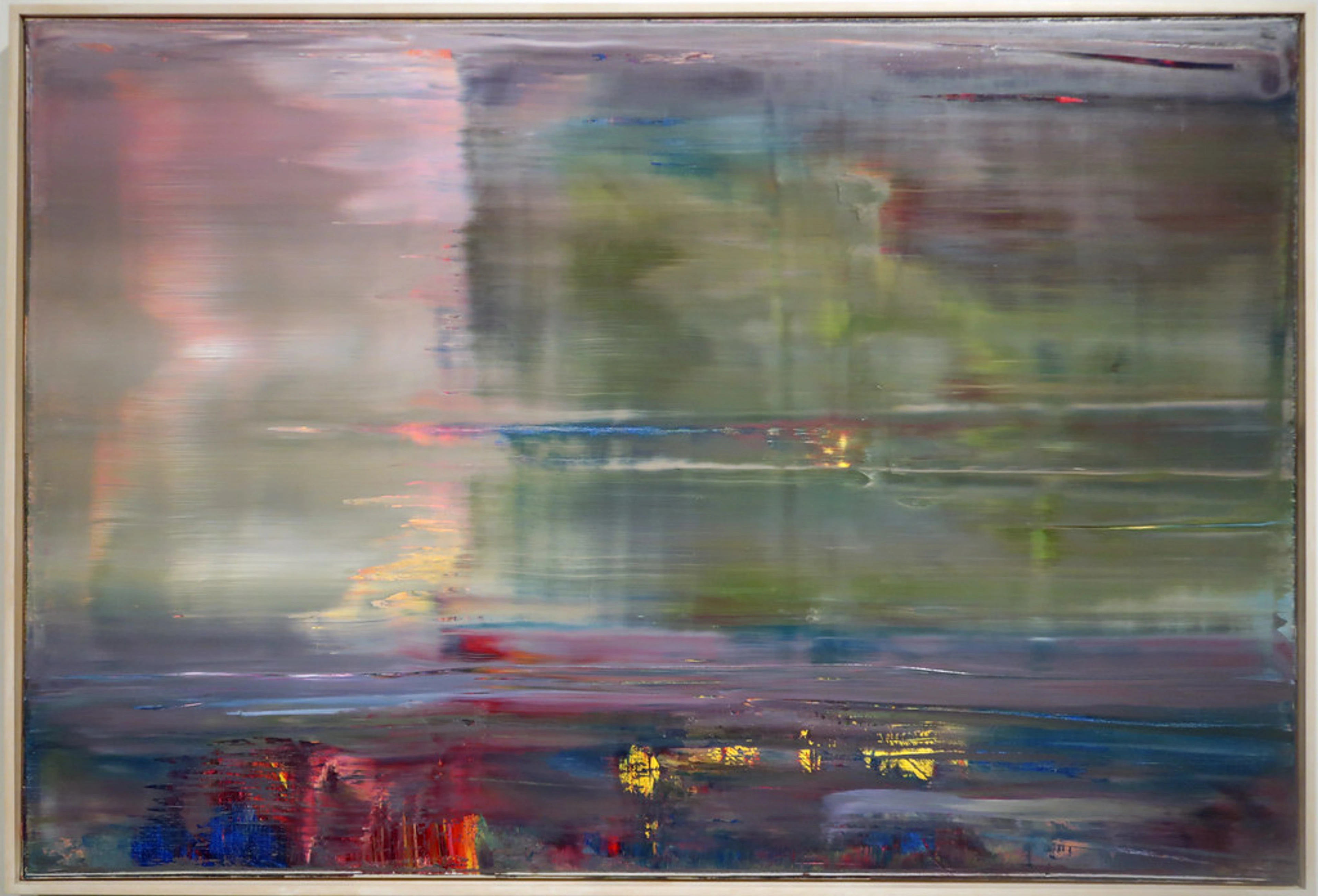
The Unspoken Symphony: How Lines Orchestrate Emotion in Abstract Art
Discover the silent language of lines in abstract art. Explore how gestural marks orchestrate emotion, from bold strokes to delicate whispers, revealing profound truths and inviting a personal dialogue.
The Unspoken Symphony: How Lines Orchestrate Emotion in My Abstract Art
Sometimes, I walk into a room and it just… communicates something profound. You know? The restless tangle of laundry on the floor isn't just fabric; it's a silent scream of "stressed chaos!" The calm, straight lines of a neatly stacked book pile? They whisper "peaceful order." Maybe it’s just me, or maybe, just maybe, we all subconsciously read the silent language of lines. It’s like an unspoken symphony playing out in front of us, orchestrating our feelings, a universal response embedded in our very perception, a primal understanding.
In my abstract art, these lines aren't merely shapes or boundaries. Oh no, they're the very heartbeat of the piece, telling a story without a single recognizable form. It’s less about what your eyes perceive and far more about what resonates within your soul. And that, my friend, is where the true magic of a gestural mark — a brushstroke, a scrape, a smudge, a line — comes alive, revealing how I infuse my emotions into the very fabric of my abstract paintings.
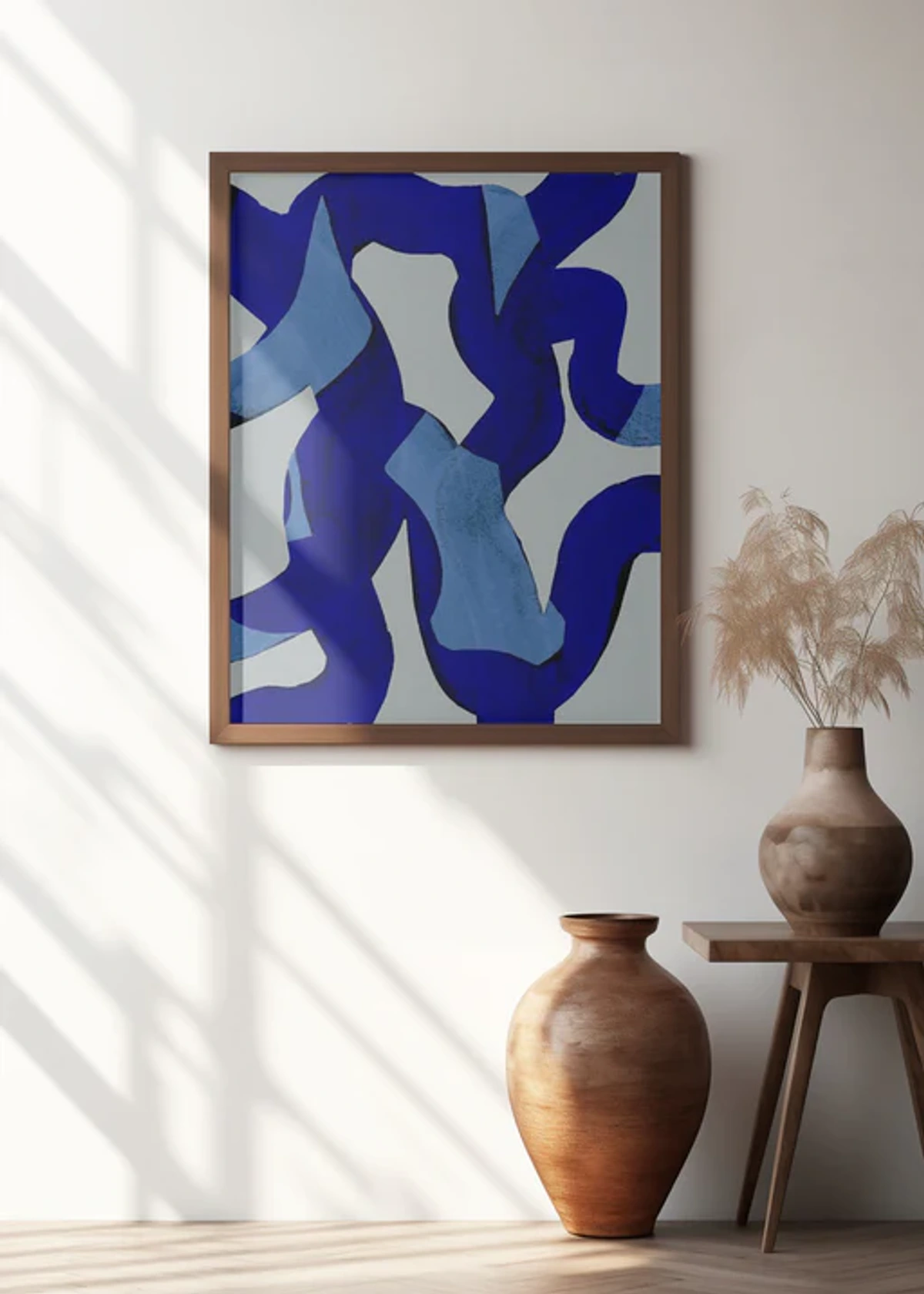
My relationship with lines is a curious, deeply personal one. For me, painting abstract is like having a conversation with myself – sometimes a quiet whisper, sometimes a full-blown argument – all expressed through the dance of the brush or the energetic scrape of the palette knife. Why abstract? Because depicting reality often feels like putting a leash on feeling. Abstract art liberates lines from the duty of representation, allowing them to be pure vectors of energy, direct emotional currents that bypass the logical mind and resonate deeply. A brush glides, a palette knife pushes and pulls, leaving behind raw, sometimes brutal, honesty. Each stroke carries a thought, an emotion, a moment of my creative flow. My aim isn't to depict reality, but to evoke it, to give form to the formless stirrings of the human spirit, a way of exploring the world that often feels more real than reality itself.
The Silent Language of Lines: The Architecture of Feeling
So, how do these seemingly simple lines speak? Think about it: a sharp, jagged line feels aggressive, doesn't it? A soft, curving one, inviting. This isn't accidental; it's deeply ingrained in our perception, a universal human response often explored in psychological theories like Gestalt principles. The Law of Continuity, for instance, suggests our eyes naturally follow lines and curves, creating a sense of smooth flow or jarring interruption that directly impacts our emotional response. Our primal brains, perhaps, instinctively react to the perceived threat of a sharp angle or the comfort of a gentle curve – a survival instinct repurposed for aesthetic appreciation. While cultural contexts might add layers of symbolic meaning to certain lines (think of flowing calligraphy or rigid tribal patterns), the visceral, immediate reaction to the energy of a line often transcends these. In my abstract art, these lines are liberated from the duty of representation. They are free to be purely themselves – raw vectors of energy, direct emotional currents that bypass the logical mind and resonate deeply. They're the very DNA of emotion, if you will, stripped bare for all to feel, inviting you to connect on a deeper, pre-verbal level.
Before diving into my personal vocabulary of marks, it's worth considering a few fundamental elements that amplify a line's emotional punch, acting as the very building blocks of this unspoken symphony:
The Foundational Elements: Beyond What You See
- Line Weight: The Subtlety of PresenceOne of the most powerful, yet often overlooked, aspects of line is its weight – how thick or thin it is, how much pressure was applied. A thick, heavy line can feel assertive, dominant, even aggressive, demanding attention. Conversely, a fine, delicate line suggests fragility, introspection, or a fleeting thought. The variation in line weight within a single piece can create a dynamic tension, a visual conversation between the weighty and the ethereal, a subtle shift in volume within our unspoken symphony.
- Negative Space: The Breath Between the NotesJust as important as the lines themselves is the space around them – the negative space. This isn't merely empty canvas; it's an active participant in the emotional dialogue. Expansive negative space can evoke feelings of calm, isolation, or endless possibility, allowing the lines to breathe. Tightly packed lines with minimal negative space, however, can create a sense of tension, claustrophobia, or intense energy. It's the silent pause that makes the melody more profound, a deliberate silence that speaks volumes.
- Line as Rhythm: The Pulse of the PaintingBeyond conveying static emotion, lines often create a palpable sense of rhythm and movement within a painting. Repetitive lines can suggest a steady beat, a meditative pulse, or a relentless force. Irregular, fragmented lines might create a syncopated, anxious rhythm, while sweeping, continuous lines flow with an almost musical grace. This rhythmic quality is what makes a painting feel alive, guiding your eye and echoing the tempo of life itself.
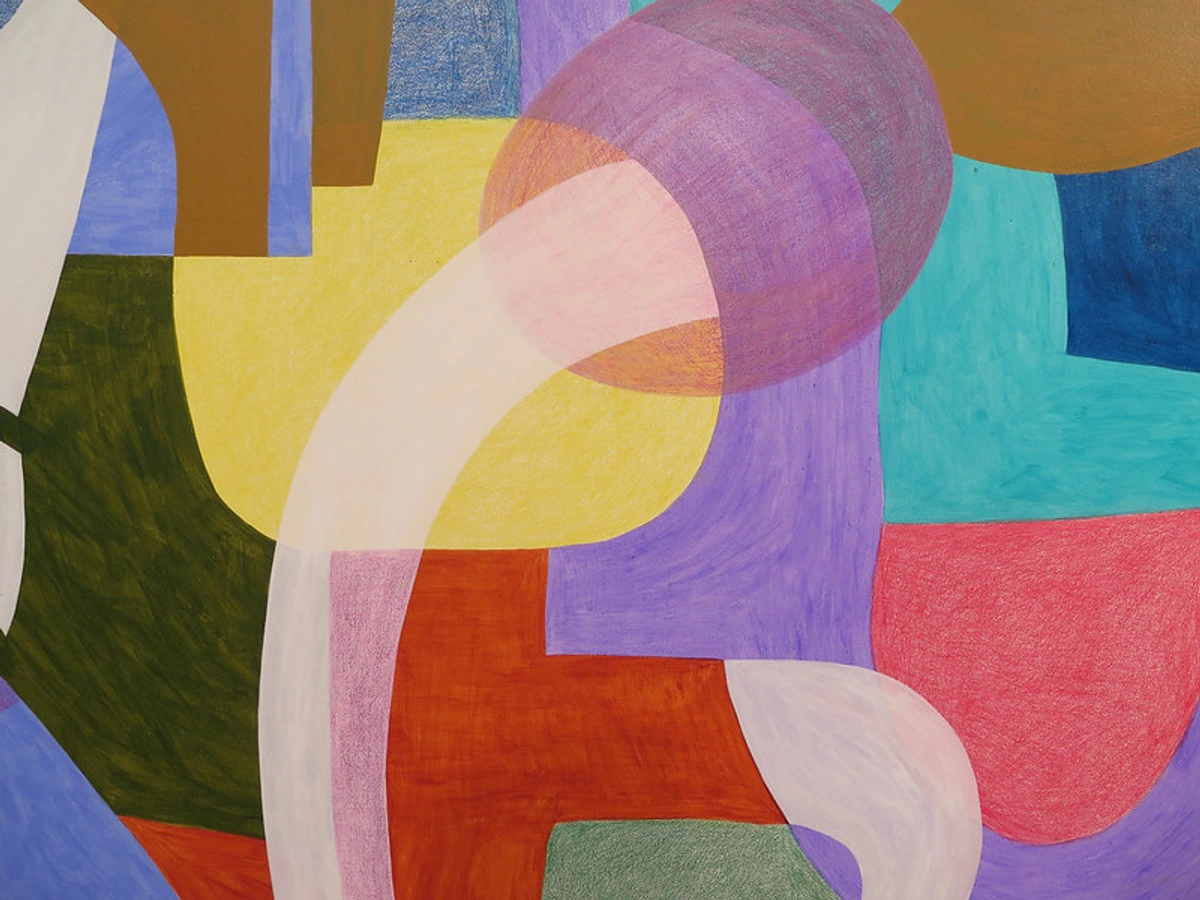
Echoes Through History: Masters of the Line
I've spent years exploring how artists use color and diving into the rich tapestry of art history. From understanding what is design in art to the dramatic flair of Expressionism, which often leans heavily on line and gesture to convey raw feeling. Consider the bold, almost tortured, angular lines in Egon Schiele's self-portraits that directly convey his internal turmoil, or the wild, untamed energy of Abstract Expressionists like Joan Mitchell, whose energetic, gestural strokes embody a visceral emotional outpouring. Then there are the lyrical, almost poetic scrawls of Cy Twombly, using repetitive, childlike lines to hint at profound historical narratives and internal landscapes. As a fascinating contrast, consider the precisely defined grids and bold, unyielding lines of Piet Mondrian. While his lines speak of order and universal harmony rather than personal turmoil, they demonstrate just as powerfully how lines, through their strict geometry and careful placement, can evoke a profound sense of balance and calm. And then there's the raw, almost confrontational brushwork of Christopher Wool, whose aggressive, often repeated or smudged lines create a powerful sense of unease or urban grit, demonstrating how the very act of mark-making can become a psychological statement. All these masters, in their own ways, harness the power of line as emotion.

While I absorb these influences, my own process remains a deeply personal one, a kind of internal conversation. It's about letting my hand speak what my mind cannot articulate directly. This is where the dance of intuition and intent truly comes into play for me, as I meticulously yet spontaneously create abstract layers that, with each successive glance, peel back to reveal new depths, hidden narratives, and echoes of the creative journey itself.
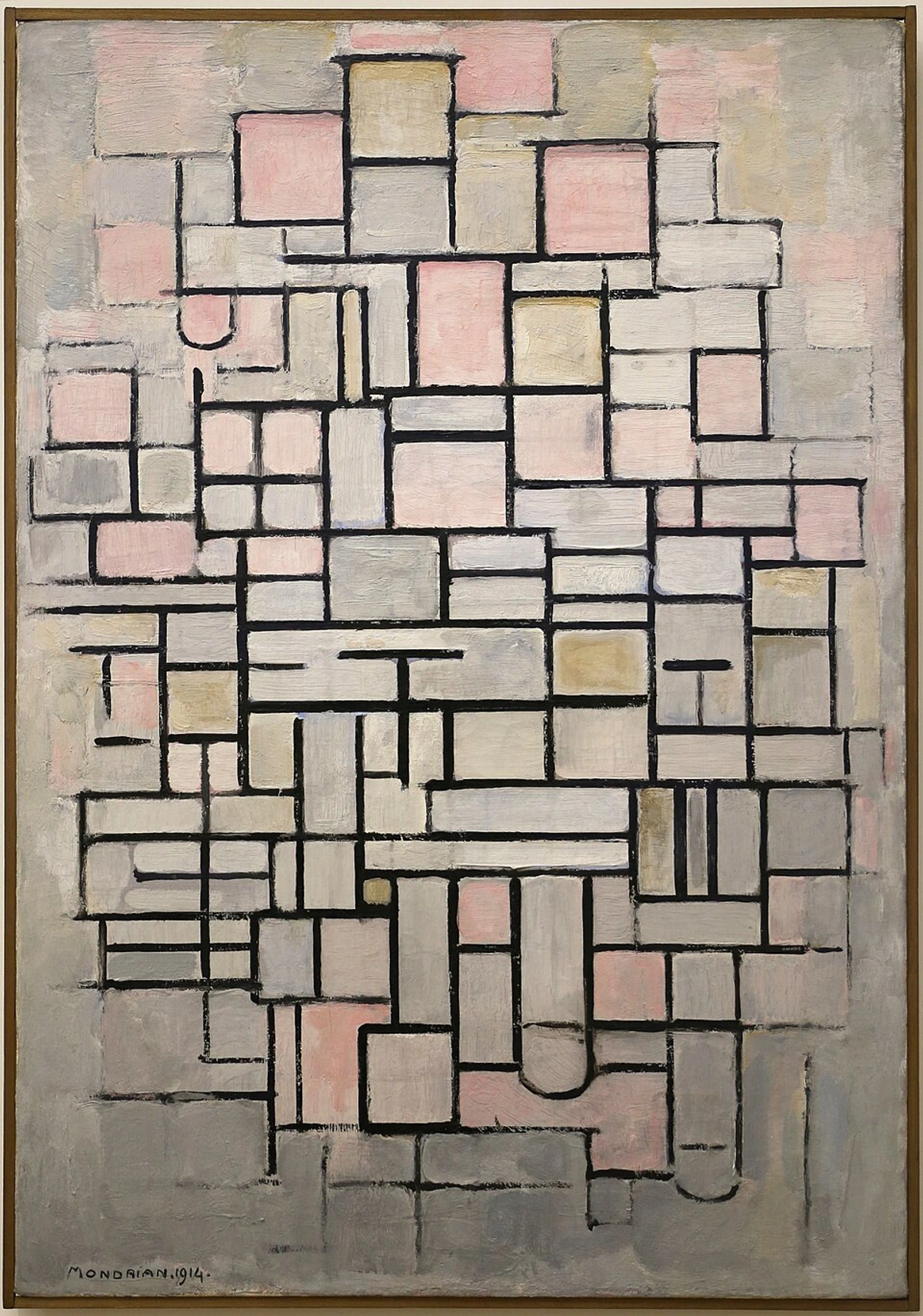
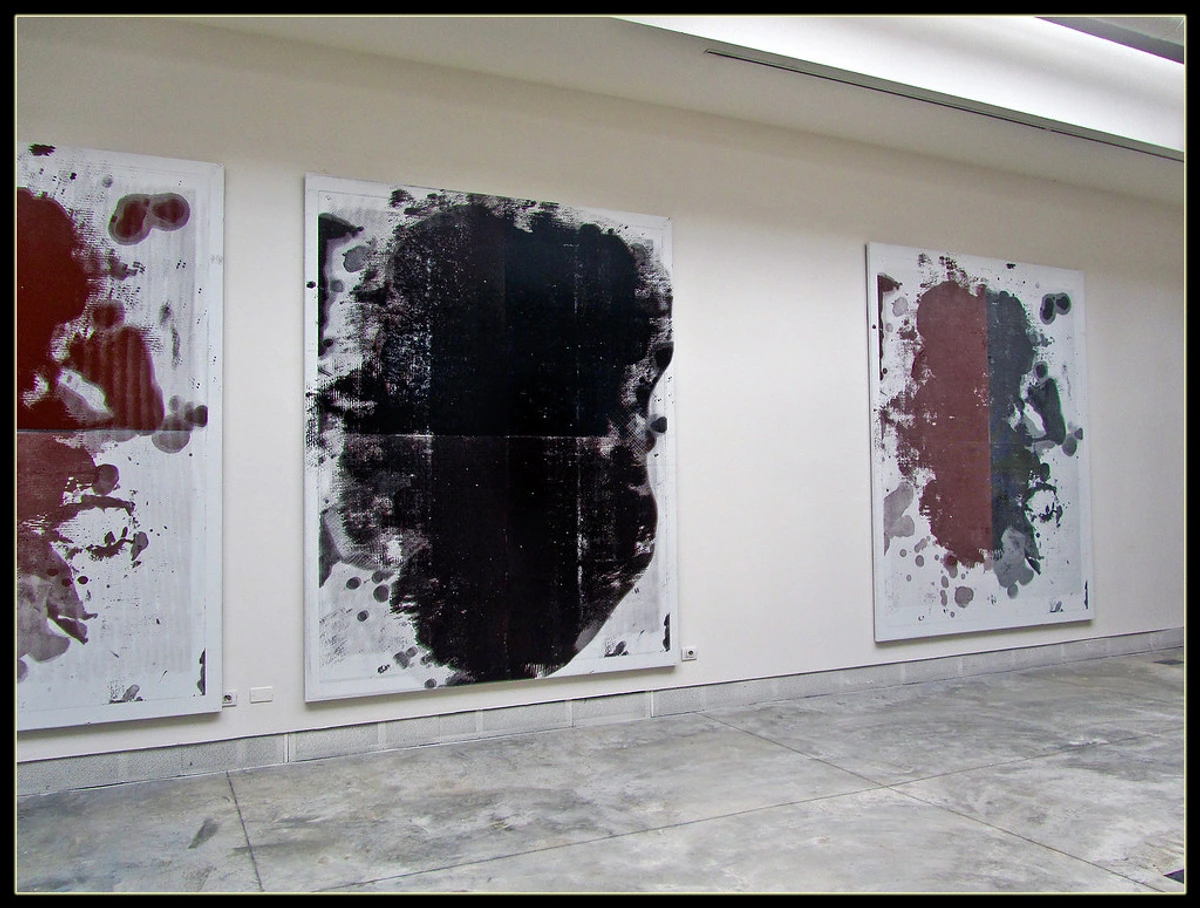
Perhaps the true beauty of a line is that it doesn’t need a face or a landscape to communicate. It just is, and in its being, it expresses everything.
My Brush, My Voice: Translating Emotion into Mark
This is where the intention meets the canvas, where the brush becomes my voice. Each type of mark I make is a specific vocabulary word in my artistic language, a direct imprint of my inner world. The very medium—whether the thick, tactile presence of oil paint applied with a palette knife versus the fluid wash of acrylics or the delicate trace of charcoal—also profoundly shapes the emotional resonance of the line. It's a dance of mark-making, where every gesture has a purpose.
The Energetic Surge: Bold, Aggressive Strokes
When I'm feeling a rush of energy, a surge of passion, or even a flicker of frustration, you'll see it in the thick, uninhibited lines. These are often applied with a confident, almost furious sweep, pushing the paint around, leaving behind tangible ridges, impasto, and visible brushwork that scream of the force and speed behind it. Think of a loaded brush, slammed onto the canvas, then dragged across with deliberate force, creating a dense, almost sculptural line. These lines possess a heavy line weight, embodying raw, untamed emotion, a moment where I'm not thinking, just being and reacting. It's a primal scream on canvas, if you like, unapologetic and direct. The color here often screams too – a fiery red or a deep, stormy black amplifies the aggression, while a vibrant yellow might suggest raw, unbridled joy. I remember one particularly stubborn painting that just wouldn't click. Every line felt wrong. Finally, in a burst of sheer artistic exasperation (and maybe a little residual grumpiness from a forgotten coffee), I just let loose, slamming the brush down. The resulting bold, almost violent, stroke finally opened the piece up, making sense of the chaos. It became the cathartic anchor, and funnily enough, a favorite detail for many viewers. These strokes are usually born from intense focus, or yes, a particularly bad morning coffee. They embody unbridled power.

The Whispered Secret: Delicate, Flowing Lines
Conversely, there are moments of calm, introspection, or a gentle unfolding. For these, my lines become lighter, softer, almost a whisper across the canvas. They might curve gracefully, loop subtly, or fade into the background. The delicate nature comes from less pressure, a lighter hand, a more fluid movement that allows the paint to settle rather than be forced. Imagine the brush tip barely touching the surface, gliding effortlessly, allowing the pigment to bleed softly into the canvas, or a diluted wash gently spread. These lines possess a light, ethereal line weight. These are the moments of contemplation, of allowing silence into the studio as the light shifts, or perhaps just letting the cat nap on my lap undisturbed, each purr a gentle rhythm. Paired with soft pastels, muted blues, or earthy greens, these lines truly whisper, deepening the sense of peace and quiet revelation. They convey serenity, elegance, and sometimes, a quiet vulnerability, a sense of allowing rather than imposing. You might notice them especially when I'm exploring texture in softer ways, building up subtle, atmospheric layers. These lines speak of peace and quiet revelation.
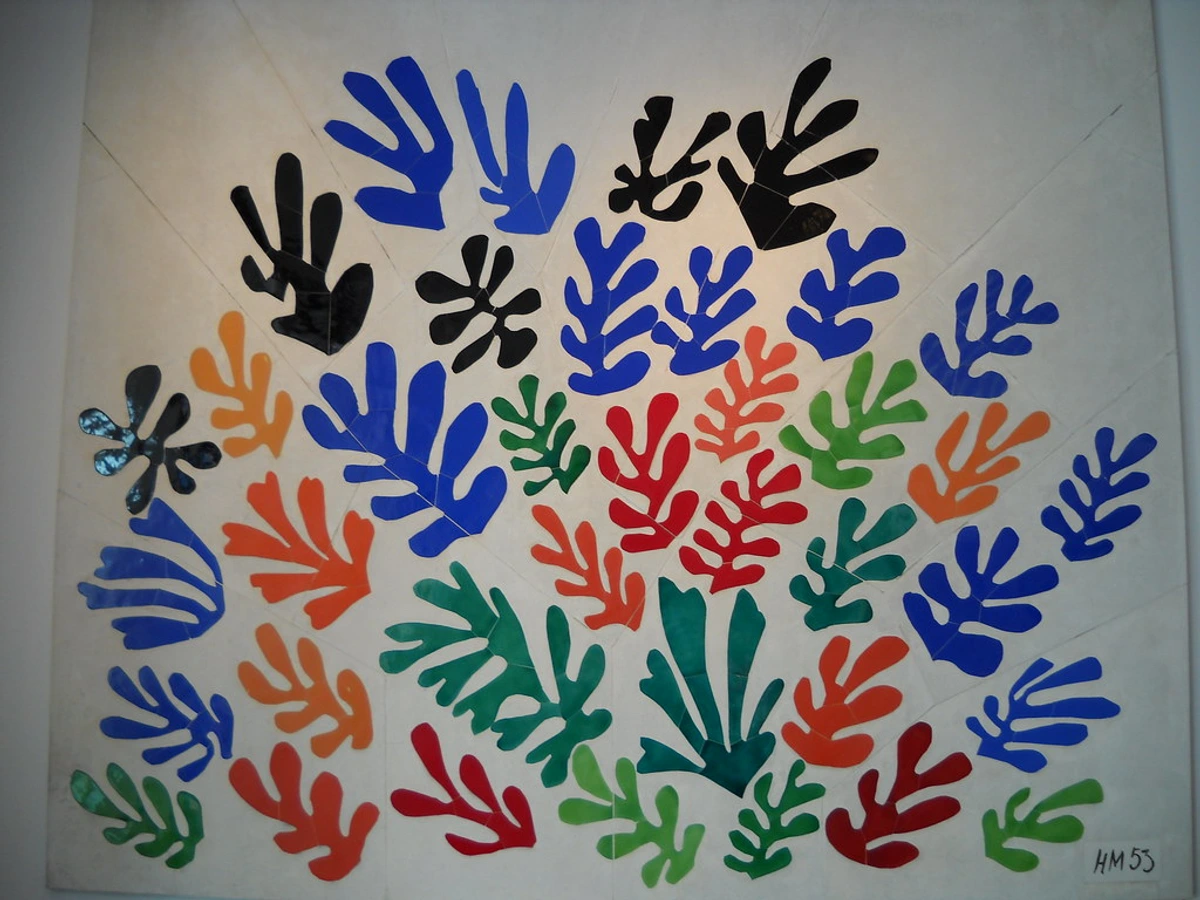
The Pause and Reflect: Broken, Fragmented Marks
Life isn't always a smooth, continuous flow. There are hesitations, uncertainties, moments of tension, and abrupt shifts. I capture these through broken lines, fragmented marks, or sudden stops and starts. They suggest a stutter, a re-evaluation, a decision point, a moment where I've paused, perhaps to question the direction, or to convey internal friction or a fragmented narrative. It’s like a sentence interrupted mid-thought, leaving you to fill in the blanks, mirroring those moments of indecision or conflict. Think of a brush applied, lifted quickly, leaving a gap, or a palette knife dragged, then rotated abruptly. Sometimes, these marks appear when I'm battling a creative block, or when I'm just plain lazy and don't want to finish a line—a raw admission, but even then, that 'laziness' or 'hesitation' becomes part of the art's truth, a candid self-portrait of my process. Often rendered in somber grays, bruised purples, or stark blacks, these marks convey a sense of rupture or internal struggle, often with an uneven line weight that mirrors their fragmented nature. They're the moments when the symphony hits a dissonant chord.
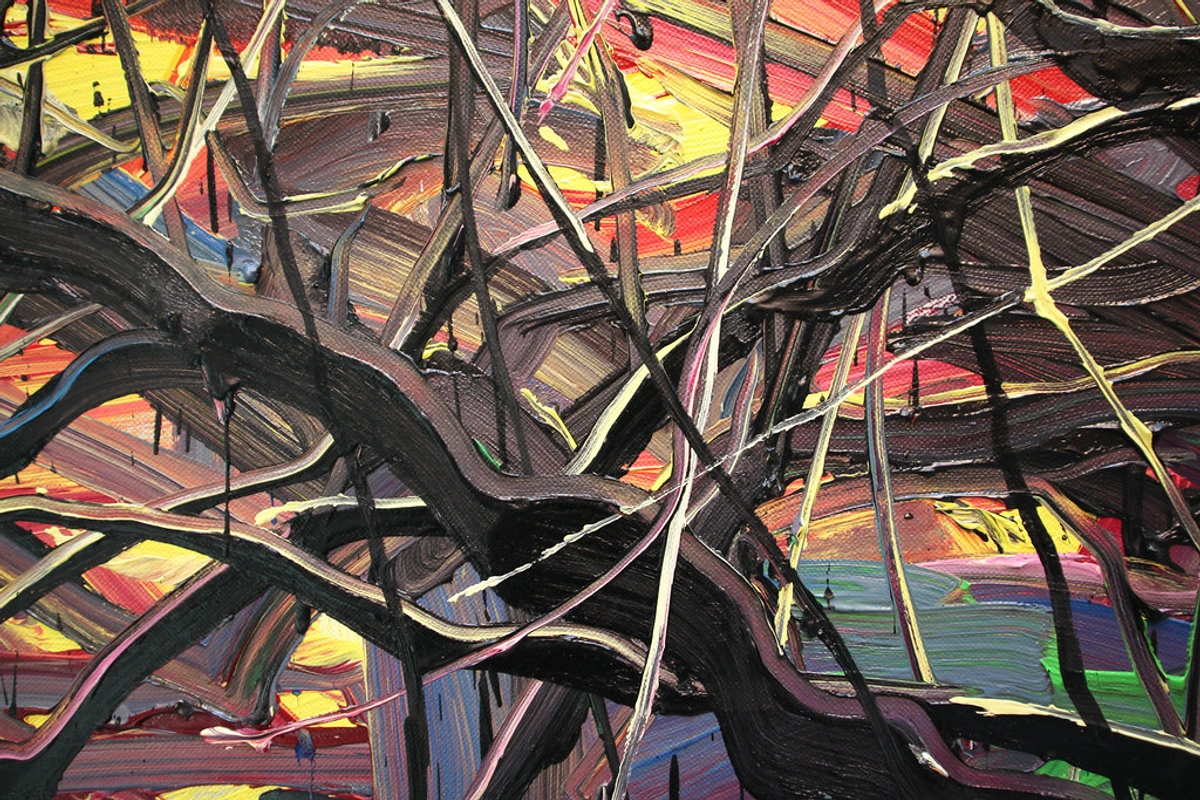
The Inner World: Layered, Overlapping Gestures
Often, my paintings are a complex tapestry of many layers, each mark building upon another, representing the multifaceted nature of human experience. Overlapping lines and gestures create immense depth and a sense of history, a visual archaeology of feelings. They speak of internal monologues, conflicting thoughts, and the beautiful messiness of our minds—like seeing fragments of many conversations all happening at once, some loud, some hushed, some incomplete. Imagine a web of initial, furious lines partially obscured by subsequent softer, curving marks, which are then punctuated by sharp, decisive accents. This layering doesn't just add visual interest; it builds a historical context within the painting, inviting the viewer to look closer, to see beyond the surface, and to discover new nuances with each engagement. For instance, an initial layer of furious, bold red lines might be partially obscured by softer, contemplative blue curves, suggesting a journey from turmoil to peace, or the enduring presence of past emotions beneath present calm. This approach is central to my overall artistic philosophy, answering the question of why I paint abstract. These layers tell a deep, evolving story, an entire symphony in themselves.
A Symphony of Marks: My Line Vocabulary at a Glance
Line Type | Characteristic | Emotional Resonance | Associated Colors | Personal Interpretation & Application |
|---|---|---|---|---|
| Energetic Surge | Thick, bold, raw, fast, heavy line weight | Passion, frustration, chaos | Fiery reds, stormy blacks, vibrant yellows | Cathartic release, unfiltered emotion, moments of intense focus; achieved with heavy pressure and loaded brushes. |
| Whispered Secret | Light, soft, flowing, gentle, ethereal line weight | Serenity, vulnerability, calm | Soft pastels, muted blues, earthy greens | Contemplation, gentle unfolding, allowing silence; achieved with light pressure, fluid movement, or diluted washes. |
| Pause & Reflect | Broken, fragmented, abrupt, uneven line weight | Hesitation, uncertainty, tension | Somber grays, bruised purples, stark blacks | Moments of indecision, creative blocks, internal conflict, fragmented narrative; achieved by lifting the brush or abrupt rotations. |
| Inner World (Layered Gestures) | Overlapping, complex, deep, varied line weight | Depth, internal monologue, history | Multifaceted, often contrasting | Multifaceted human experience, conflicting thoughts, evolving emotional landscapes; built by successive layers of varying marks and colors. |
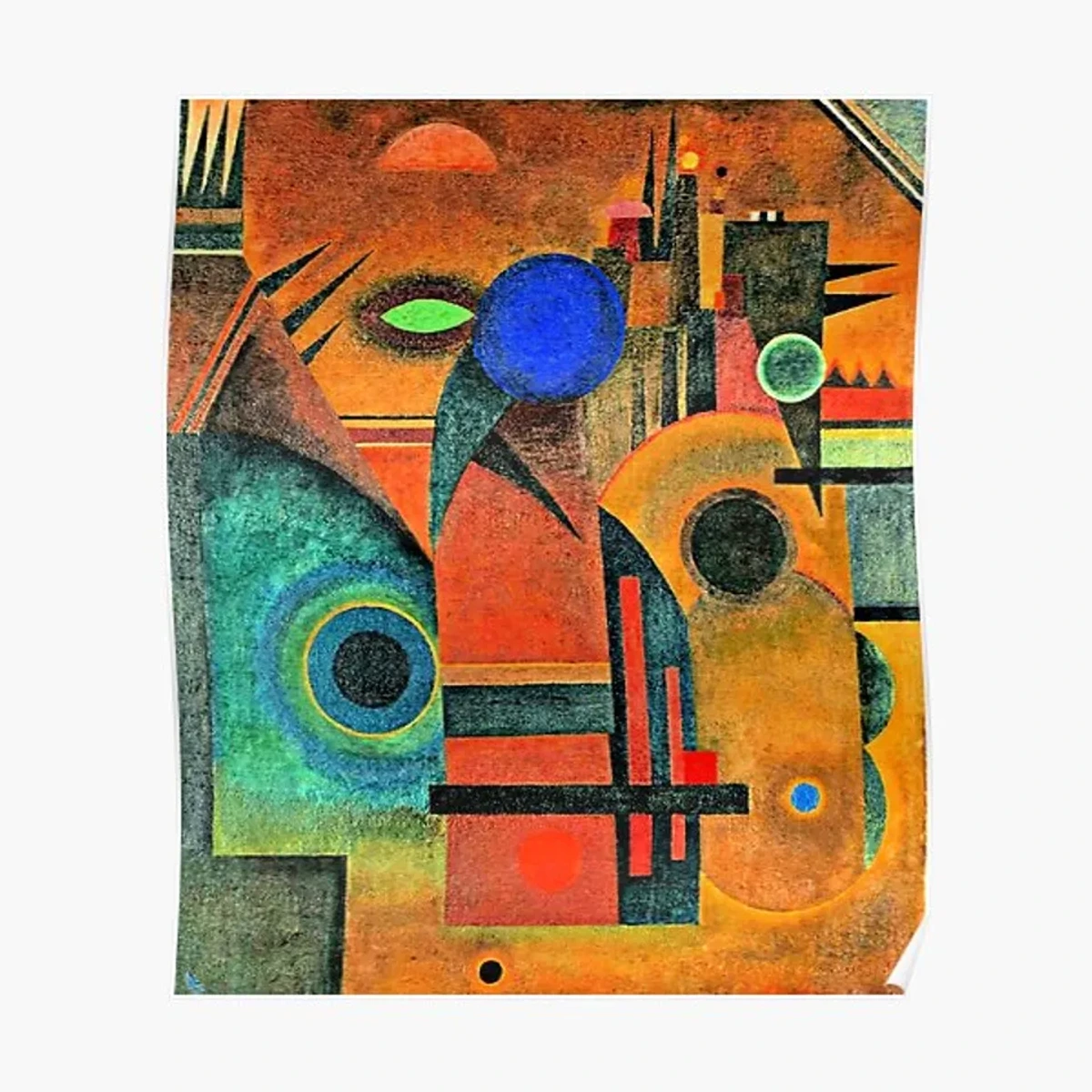
My hope is that by understanding these 'words' in my artistic vocabulary, you, the viewer, can engage with my work on an even deeper, more personal level. It's an invitation to feel, not just to see. And remember, the color of a line also plays a vital role; a bold red stroke will speak differently than a bold blue one, adding another layer to the emotional dialogue and enriching the unspoken symphony.
The Intuitive Connection: Reading Between My Lines, and Yours
The beauty of abstract art, and particularly the language of line, is its profound invitation to the viewer. When you stand before one of my paintings, you're not just looking; you're feeling. You're entering a dialogue with art, where your own experiences, your own emotional landscape, will inevitably color your interpretation. It's a journey into shared humanity, but through an intensely personal lens. As you observe different lines in my work, what emotions do you find resonating within you?
How to Tune Into the Unspoken Symphony: To truly engage with the emotional language of lines, try these simple approaches:
- Slow Down & Breathe: Don't rush. Let your eyes wander, following the lines. Notice where they lead, where they stop, where they intertwine. Take a few deep breaths and simply feel what arises.
- Embrace the Ambiguity: You don't need to 'figure it out.' The beauty is in the feeling. Allow yourself to respond instinctively, without judgment. If a line feels sad to you, it is sad for you in that moment.
- Trace the Journey: Imagine the artist's hand. How much pressure? How fast was the stroke? What was the tool? This physical empathy can deepen your connection to the energy of the mark.
- Personal Reflection: Think about lines in your own life – the tangled phone cord, the straight path you walk, the chaotic scribbles on a notepad. How do those lines make you feel? Apply that same intuitive understanding to the artwork.
I often think about how to interpret body language in portrait art, and in a way, my art is a form of body language too—the body language of my creative process, a silent gesture across the canvas. There's no right or wrong answer when it comes to decoding abstract art; it's a guide to finding meaning in non-representational works, and finding your meaning is the whole point. The energy a line emits is palpable, a silent hum that resonates deep within, even if the specific emotion it triggers varies from person to person. That's the magic: it's a shared experience, yet intensely personal. It's a conversation where I speak through lines, and you respond with your feelings, creating a unique moment in time that only exists between you and the canvas.
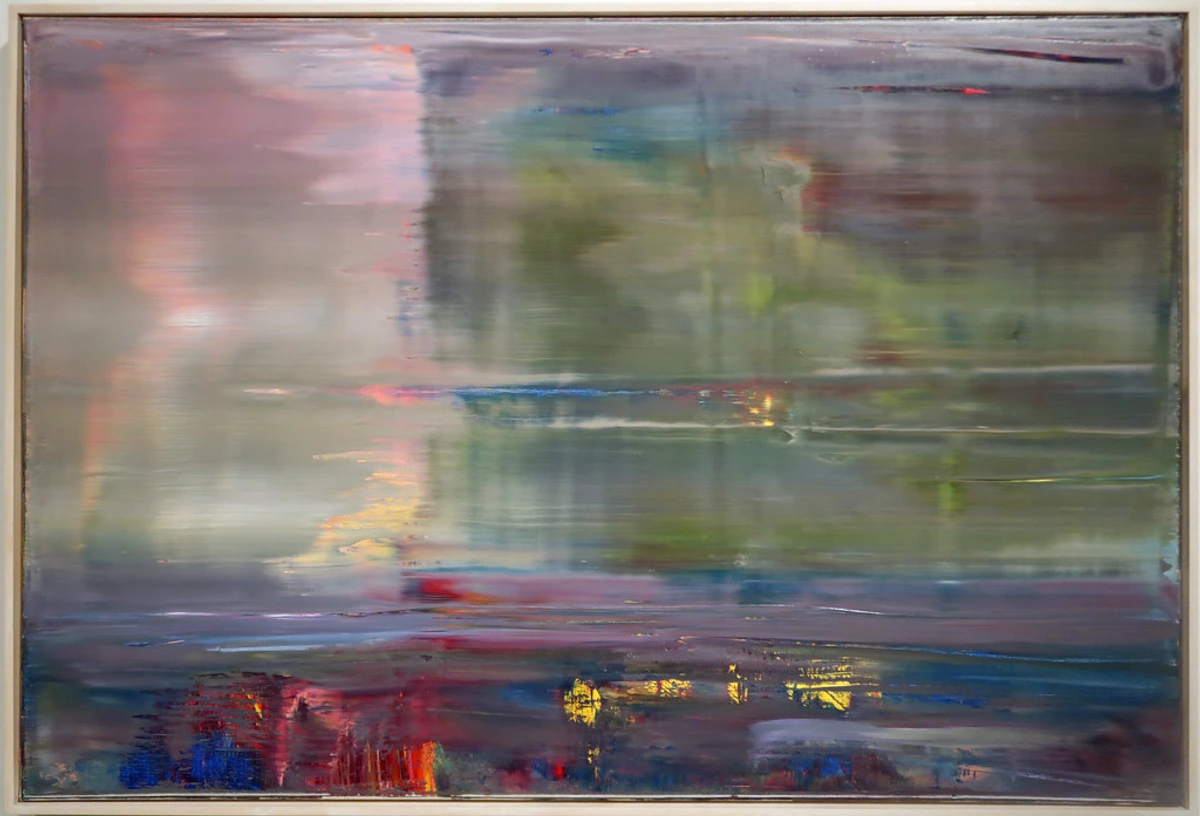
It's a wonderful, often surprising, encounter that can reveal as much about you as it does about me, the artist.
FAQ: Decoding the Language of My Lines
How do you decide what emotion to convey in a painting?
Honestly, it's less a conscious decision and more a visceral reaction. My painting process is often spontaneous, embracing intuition in abstract creation. The emotion emerges from my mood, the music I'm listening to, or even just the tactile sensation of the paint—its smell, the texture of the canvas—or even the memory of a particularly delicious (or disappointing) meal! Sometimes, I start with no emotion in mind, and the lines guide me to it, a conversation unfolding stroke by stroke. It's very much a part of my creative flow.
Is it intentional or spontaneous?
It's a beautiful, chaotic, and utterly human dance between the two. The desire to convey emotion, or to explore a certain theme, is often intentional – a starting point, a whisper of intent. However:
- The specific way a line forms – the drips, the scrapes, the unexpected color bleed – that's pure improvisation, guided by intuition and the moment.
- Intent sets the stage; spontaneity performs the act.
It's the dance of intuition and intent, creating abstract layers that build upon each other, each revealing a little more of that delicate balance.
Can different people see different emotions in the same painting?
Absolutely, and that's the greatest compliment! While I infuse my emotions into the work, your personal history, your current mood, and even the events of your day will inevitably influence how you interpret those gestural marks. The bold stroke that feels like anger to me might feel like exhilarating freedom to you, or perhaps even a deep, resonating calm. That's the subjective power of abstract art, and why it holds such a unique and timeless place in art history. It's a mirror, reflecting your own inner world.
How does the medium influence the lines and emotion?
Oh, significantly! The material itself becomes part of the expressive language, but so does the technique of application. For instance:
- Thick Oil Paint & Palette Knife: Creates powerful, sculptural lines, often full of raw energy and textured physicality, as seen in the "Energetic Surge" strokes. The inherent line weight of oil paint lends itself to a powerful presence, especially when applied with thick impasto.
- Fluid Acrylics & Brush: Allows for swift, flowing lines or delicate washes, perfect for conveying the "Whispered Secret" or the spontaneous flow of emotion. Techniques like wet-on-wet or pouring can produce ethereal, diffused lines, while dry brushing creates a more textured, broken effect. These mediums often produce lighter line weights.
- Charcoal & Graphite: These create more ethereal, smudged, or crisp lines that can capture fleeting thoughts or deep introspection, often with a sense of vulnerability. Techniques like smudging or cross-hatching offer a wide range of line weights from a gentle whisper to a firm declaration.
Each medium and its specific application inherently lends itself to certain gestural qualities and emotional expressions, adding another layer to the unspoken symphony.
How can I appreciate the lines in abstract art more?
Slow down. Seriously, just slow right down. Don't try to "figure it out" or assign a literal meaning. Instead, let your eyes wander across the canvas. Notice the thickness, the direction, the implied speed, the pressure, the texture, the line weight, and the surrounding negative space. How does it make you feel? Does it lead your eye somewhere? Does it clash with another line, or flow with it? For an even deeper connection, try this: grab a pen and paper, close your eyes for a moment, think of a strong emotion—joy, frustration, peace—and then, without looking, just draw a line that feels like that emotion. Open your eyes. See how powerful that simple mark is? The more you simply observe, feel, and even create, the more the language of line will reveal itself. Consider it a journey, much like my own artistic journey documented on my timeline.
The Ever-Evolving Dialogue of Line: An Unspoken Symphony
The language of line is an endless exploration, for me as an artist and for you as a viewer. Every new piece is a fresh conversation, a new movement in this grand unspoken symphony. It’s a testament to the idea that even without recognizable forms, the subtle nuances of line, weight, rhythm, and negative space can communicate profound truths about the human condition and your own inner world. It reminds me that even in the seemingly random chaos of life, there's always an underlying rhythm, a silent story waiting to be felt, much like that stressed tangle of laundry or the peaceful stack of books. The world is full of these silent symphonies, if only we take a moment to listen with our eyes.
If you're curious to experience this language firsthand, to truly feel the heartbeat of a piece and find your own resonance within its unspoken symphony, I invite you to explore my latest art for sale on the website. Each piece is a new conversation, a new journey waiting. Or, if you're ever near 's-Hertogenbosch, you can always visit my museum where these conversations come to life in person, surrounding you with textures and emotions. It’s a space where you can truly immerse yourself in the unspoken narratives I strive to create.
And remember, the next time you see a scribble on a napkin, a crack in the pavement, or even the intricate patterns in a stirring cup of coffee, consider the silent story its lines might be telling. You might just find a little piece of abstract art, and a profound emotional connection, in your everyday world. It's all part of the symphony, after all.




